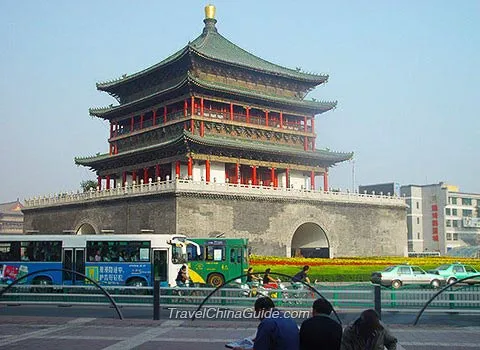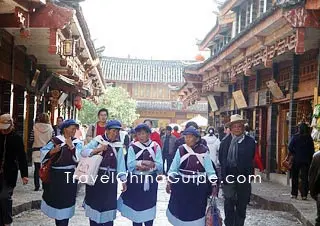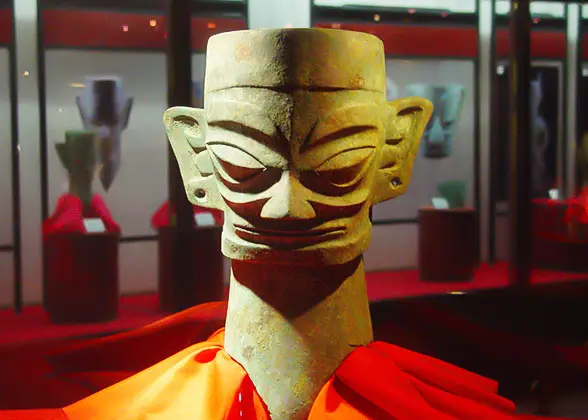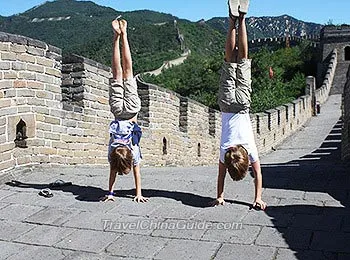Home /
Top 10 Ancient Cities in China
Benefiting from the 5,000 years’ history, many ancient cities exist in the vast land of China. Some of them used to be regional economic centers, some witnessed historic upheaval, some were important military strongholds, and some are known for marvelous cultural relics or handicrafts. Here are the top 10 ancient cities in China, and each has their unique features.
The Ancient City of Pingyao is one of the foremost well-preserved ancient cities in China, and its history dates back to 828 BC-783 BC of the Western Zhou Dynasty. Nevertheless, it is now most famous for retaining the architectural motifs of the Ming and Qing Dynasties (1368-1911). Four main streets, eight minor streets and seventy-two alleys are horizontally and vertically straight as they were originally. Besides, at this ancient China city, over 300 historical sites and 4,000 folk dwellings bring tourists a clear panorama of people’s life at that time.
Speaking of which, Pingyao used to be the financial center of China in the late Qing Dynasty (1644-1911), and local merchants did business all over China and in central and southeast Asia and Europe. Accordingly, China’s earliest modern bank took shape here. If you’re interested, why not ask a shopkeeper for an archaistic bank draft as a souvenir? In addition, during the tour, one can experience many folk activities such as stilt walking and Yangko dancing.
This ancient city in China took shape at the turn of the Song Dynasty (960-1279) and the Yuan Dynasty (1271-1368). Situated among hills and waters, this place was naturally designed with lots of water channels and bridges. Ancient craftsmen also drew upon the building techniques of the local Naxi, Bai and Yi ethnic minorities, and the use of wooden structure, screen wall and skylight was really impressive.
Apart from architecture, Lijiang Old Town also stands out for ethnic minorities’ diversified culture. Here, one can appreciate Naxi people’s traditional music, watch their worshipping and wedding ceremony, and get to know their unique methods of divination. If you come to this old city in China in July or August, you may have chance to attend the lively Torch Festival. Besides, many stores selling tea, silver ware or accessories are worth visiting.
During the Tang (618-907) and Song Dynasties, Dali was a politically, economically and culturally important city in ancient China. Owing to warfare, it was not until 1382 that the formal construction of this ancient city took place. However, most of the temples, academies and dwellings we see now were built from the Ming Dynasty to the Republic of China (1912-1949).
The culture of the Bai ethnic minority is a more striking feature of this ancient China city. Versatile Bai people boast their own music, play and dance, thus the performance can bring tourists a visually and acoustically refreshing experience. Also, it is a great pastime to learn tie-dying or wax printing from them and make your own T-shirt or handbag with cute patterns on. If you want to choose a gift, a handicraft carved from wood or marble will never go wrong. By the way, remember to taste papaya chicken, sour and spicy fish, and grilled pork. These are Bai’s specialties and cannot be found anywhere else.
Constructed in 1556, Fenghuang Ancient Town is another historical city in China known for ethnic diversity. Generations of Miao, Tujia and Han people live here, and it now accommodates 28 ethnic groups in total. Other than that, quaint temples, ancestral shrines and riverside stilt houses all contribute to this place’s unique charm.
Taking a Tuo River cruise is a good way to enjoy Fenghuang’s beauty, and a night cruise is even better when everything is lit up by lanterns. Then, why not try on Miao people’s traditional clothes and take a photo? This activity is especially popular among ladies because they can wear silver earrings, necklace, bracelet and headwear like Miao women do. Also, gourmets should grasp this chance and taste authentic Miao dishes, such as bean jelly, sour soup and fried duck blood with sticky rice (Xue Ba Ya).
Langzhong area was of great military importance in ancient times, because the Daba Mountain and the Jialing River made it less easy to be conquered. The buildings inside were arrayed in grid pattern to bring positive impact, according to Chinese Feng Shui.
When talking about the Three Kingdoms Period (220-280), this ancient China civilization city should not be forgotten, because Zhang Fei, the most famous general at that time, had been stationed here for seven years. During the Tang Dynasty, Langzhong experienced religious prosperity, when Taoism, Buddhism, Islamism, Christianity and Catholicism were spread here one after another. That explains why monastery, temple and church coexist with each other.
Now, many interesting activities are designed to familiarize tourists with ancient culture. For example, one can take imperial examinations, judge cases as an ancient official, or attend a traditional Chinese wedding.
Huizhou Ancient City was built in 221 BC, Qin Dynasty. In history, this place was mostly known for commercial prosperity, as Hui Businessmen were very competent and resilient. Also, as an advanced city in ancient China in terms of fine arts, Huizhou people created their unique genres of Confucianism, painting, opera, woodcut, seal carving and architecture. Tourists may feel them when wandering through well-preserved streets, residences and memorial archways.
After a weary day of sightseeing, why not treat yourself with local food? As one of the Eight Famous Cuisines of China, Hui Cuisine features light taste and braising techniques. Stewed soft shell turtle with ham, pickled mandarin fish, and stewed pigeon are strongly recommended.
7
Jingzhou Ancient City
Constructed in the Eastern Zhou Dynasty (770 BC-256 BC), Jingzhou Ancient City used to be a quay originally. After hundreds of years’ expansion, Jingzhou ushered in its crucial period during the Three Kingdoms Period. Given its favorable geographical location, the Kingdom of Wei (220-265), Shu (221-263), and Wu (222-280) contended for this place for a long time, and many historical sites built at that time are preserved till now.
Live performances, adapted from real stories in history, are another way for tourists to learn about the Three Kingdoms culture. Skillful actors and vivid settings can bring every one back to the riverine warfare and Lord Guan’s triumphant return at that time. In addition, every January and May 13th of the Chinese Lunar Calendar, the bustling temple fair in memory of Lord Guan revivifies this old Chinese city. Tourists can have fun riding horse, shooting arrow and watching dragon dance.
Jianshui Ancient Town was built in 810, Tang Dynasty. Now, historical sites and traditional residences are the highlights of this ancient city in China. Tourists may roam around various buildings, from Hani people’s thatch- or bamboo-roofed house to Yi and Dai people’s bungalow, from quaint temples to classical gardens.
As a major city in ancient China which upheld Confucianism, Jianshui has two characteristic attractions, Confucius Temple and the National Examination Site. Here, tourists can dress in traditional Han clothes, appreciate ancient music, and try archery or seal carving. Besides, there are three Confucian ceremonies for children, including the First Writing Ceremony, Goodbye to Childhood Ceremony and the Coming of Adult Age Ceremony.
Having delicious food is also an important part of your tour to Jianshui. No.1 food you must try is the Jianshui Grilled Tofu, which is cheap and can be seen everywhere. Steam Pot Chicken and Crossing Bridge Rice Noodles are bound to arouse your appetite.
9
Shangqiu Ancient City
Situated in the Yellow River Valley, Shangqiu area is considered the birthplace of Chinese civilization. From the Xia Dynasty (21st -17th century BC) to the Tang Dynasty, this Chinese old city was a distributing center of grain, salt, tea and silk, and experienced a long period of commercial prosperity. Unfortunately, a flood severely hit here subsequently, and six towns of previous generations were engulfed. From 1503 to 1540, ancient people reconstructed the Shangqiu Ancient City right on the original site. No wonder people also call it a multi-layered city.
The best time to visit it is around the Chinese New Year, when the grandest temple fair at Shangqiu is held to worship the God of Fire. Various folk performances and the festival atmosphere will bring you an unforgettable experience. Apart from temple fair or festival parade, stores at the Shangqiu Ancient City can also feast your eyes on beautiful embroidery, paper cut, wickerwork and clay sculptures.
10
Xiangyang Ancient City
Xiangyang Ancient City was said to be built in 201 BC, Western Han Dynasty. Surrounded by water on three sides, this area was blessed with conditions of being a military port, and it was in the Tang Dynasty when it began to expand from a fortress to a city. Since militarists of different regimes all attached great importance to Xiangyang, this ancient Chinese city experienced many fierce battles, particularly during the Three Kingdoms and the late Song Dynasty.
Though thousands of years went by, tourists can still feel the vicissitudes of history through the well-preserved city wall and moat at the Xiangyang Ancient City. After that, you may visit some historical sites of ancient celebrities. The top two are Gulongzhong and Migong Temple, where Zhuge Liang, a famous politician of the Three Kingdoms, and Mi Fu, a talented painter of the Northern Song, once lived.
- Last updated on Aug. 06, 2025 by Gabby Li -



